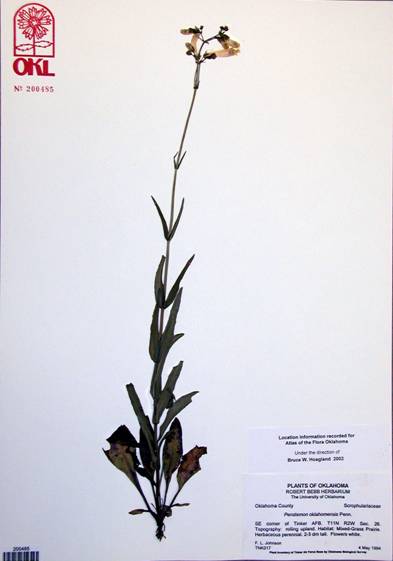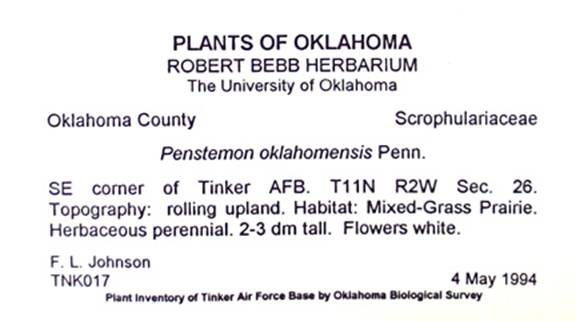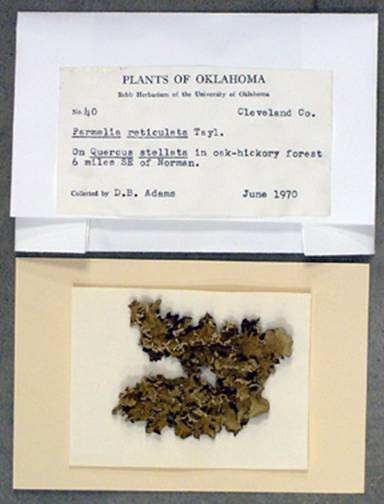|
|
What
is a herbarium?
A
herbarium is a collection of plant specimens that have been pressed,
dried, and mounted on rigid paper of archival quality. Each
herbarium specimen includes a label with information pertaining to
the plant's identification, geographical location, habitat, and
morphology. Herbarium specimens are filed in a logical system,
allowing researchers to access them easily.
A
herbarium is a library and research tool for systematists and
taxonomists -- scientists concerned with the identification,
classification, ecology, evolution, and distribution of plants. If
properly cared for, herbarium specimens can last for centuries,
providing a record of the world's flora throughout time. Herbaria
also serve as repositories of anatomical data, such as pollen, and
genetic information, such as DNA. Herbaria also house 'type'
specimens. 'Types' are extremely valuable specimens, because they
stabilize scientific names and they are samples of the actual plant
that formed the basis of the original description of a particular
species.
 The
practice of collecting, drying, and mounting botanical specimens
began in 16th century Italy. By the time of Linnaeus in
the 1700's, the custom was widespread throughout Europe. Early
herbaria were private collections, and specimens were bound together
in large books rather than kept as separate sheets. A "herbarium"
originally was a book about medicinal plants. The term was applied
to actual collections of specimens in the 18th century.
The
practice of collecting, drying, and mounting botanical specimens
began in 16th century Italy. By the time of Linnaeus in
the 1700's, the custom was widespread throughout Europe. Early
herbaria were private collections, and specimens were bound together
in large books rather than kept as separate sheets. A "herbarium"
originally was a book about medicinal plants. The term was applied
to actual collections of specimens in the 18th century.
 |
 |
Herbarium specimen of
Penstemon oklahomensis
with
label, annotation label,
and bar code reference
Vascular plants are mounted on 11" x 16" sheets of archival paper.
|
Specimen label with data on
location, complete
scientific name, habitat,
collectors
and collection number, and date of collection
|

|

|
Moss, liverwort, and lichenized fungi specimens are
generally stored in 4" x 6" packets with a stiff backing.
|
Packets are generally stored in boxes within cabinets.
|

|

|
Specimens in herbarium cabinets are organized in a
systematic manner and kept in facilities that minimize
damage from fire, water, and insects.
|
Specimens are organized within cabinets by taxonomic group
(family, genus, species) and geographic region
|
This
page is sponsored by the Oklahoma Biological Survey

Disclaimer
|


 The
practice of collecting, drying, and mounting botanical specimens
began in 16th century Italy. By the time of Linnaeus in
the 1700's, the custom was widespread throughout Europe. Early
herbaria were private collections, and specimens were bound together
in large books rather than kept as separate sheets. A "herbarium"
originally was a book about medicinal plants. The term was applied
to actual collections of specimens in the 18th century.
The
practice of collecting, drying, and mounting botanical specimens
began in 16th century Italy. By the time of Linnaeus in
the 1700's, the custom was widespread throughout Europe. Early
herbaria were private collections, and specimens were bound together
in large books rather than kept as separate sheets. A "herbarium"
originally was a book about medicinal plants. The term was applied
to actual collections of specimens in the 18th century.




